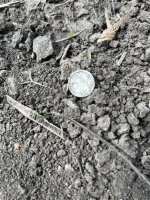FISHEYE
Bronze Member
- Feb 27, 2004
- 2,333
- 401
- Detector(s) used
- Chasing Dory ROV,Swellpro Splash 2 pro waterproof drone,Swellpro Spry+ wa,Wesmar SHD700SS Side Scan Sonar,U/W Mac 1 Turbo Aquasound by American Electronics,Fisher 1280x,Aquasound UW md,Aqua pulse AQ1B
- Primary Interest:
- All Treasure Hunting
Historian Says New Smyrna Is State's Oldest City
St. Augustine Commonly Thought To Be Oldest City In Country
NEW SMYRNA BEACH, Fla. -- One local historian said he has the research to prove that Florida's oldest city is not St. Augustine.
"I'm not the first one to think of this," New Smyrna resident Harris Samuels said.
Samuels said that on a visit to St. Augustine he noticed a map from 1589 that claimed to show that city as the oldest continuously occupied city in America -- and it looked an awful lot like New Smyrna Beach.
"It may be that when St. Augustine was first founded it was at this location and then moved within months," Samuels said.
Samuels said that after 10 years of research, he's found significant evidence that the 1589 map actually shows the first Spanish settlement was in New Smyrna. He points to ruins in New Smyrna's Old Fort Park as a clue.
The origin of the ruins has long been a mystery and the topic of much debate. Samuels believes it may be the site of a fort mentioned in old Spanish maps as the original St. Augustine.
Samuels said the fort on the site was burned down not long after it was built by Englishman Sir Francis Drake and it was after that that the city of St. Augustine was established in its current location.
Samuels' research could potentially rewrite history, but he said what he's most interested in is preserving it.
"My interest is that it doesn't get lost," he said.
St. Augustine Commonly Thought To Be Oldest City In Country
NEW SMYRNA BEACH, Fla. -- One local historian said he has the research to prove that Florida's oldest city is not St. Augustine.
"I'm not the first one to think of this," New Smyrna resident Harris Samuels said.
Samuels said that on a visit to St. Augustine he noticed a map from 1589 that claimed to show that city as the oldest continuously occupied city in America -- and it looked an awful lot like New Smyrna Beach.
"It may be that when St. Augustine was first founded it was at this location and then moved within months," Samuels said.
Samuels said that after 10 years of research, he's found significant evidence that the 1589 map actually shows the first Spanish settlement was in New Smyrna. He points to ruins in New Smyrna's Old Fort Park as a clue.
The origin of the ruins has long been a mystery and the topic of much debate. Samuels believes it may be the site of a fort mentioned in old Spanish maps as the original St. Augustine.
Samuels said the fort on the site was burned down not long after it was built by Englishman Sir Francis Drake and it was after that that the city of St. Augustine was established in its current location.
Samuels' research could potentially rewrite history, but he said what he's most interested in is preserving it.
"My interest is that it doesn't get lost," he said.






